#Autonomouscontrols
Explore tagged Tumblr posts
Text
Autonomous Agricultural and Construction Vehicles
October 31, 2023
by dorleco
with no comment
Autonomous Vehicle Technology
Edit
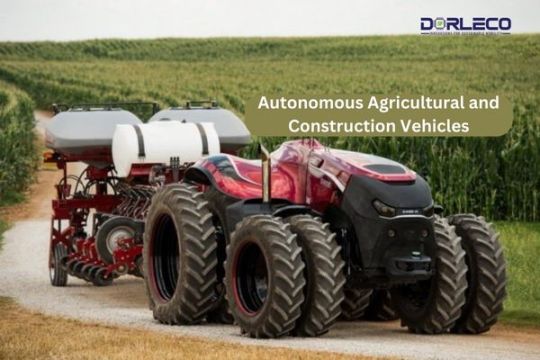
Introduction
A major technological leap in farming and building is represented by Autonomous Agricultural and Construction Vehicles. These cars can function with little assistance from humans because of their sophisticated sensors, GPS, and artificial intelligence systems. This article introduces these cutting-edge devices, summarizing their salient characteristics, advantages, and possible drawbacks of Autonomous Agricultural and Construction Vehicles.
Important Characteristics of Self-Driving Construction and Agricultural Equipment
Technology of Perception and Sensors: Autonomous cars can sense their surroundings thanks to a variety of sensors installed in them, including GPS, LiDAR, radar, and cameras. These sensors give the car real-time information about its surroundings, which aids with navigation and decision-making.
Artificial Intelligence (AI): AI systems analyze the sensor data and decide how to maneuver the vehicle, carry out tasks, and avoid obstacles. Over time, the vehicle’s decision-making abilities are frequently enhanced through the use of computer vision and machine learning.
GPS and Mapping: Accurate navigation requires high-precision GPS devices. Digital maps of the work area are frequently pre-programmed onto vehicles, enabling them to follow predetermined paths and carry out duties with remarkable accuracy.
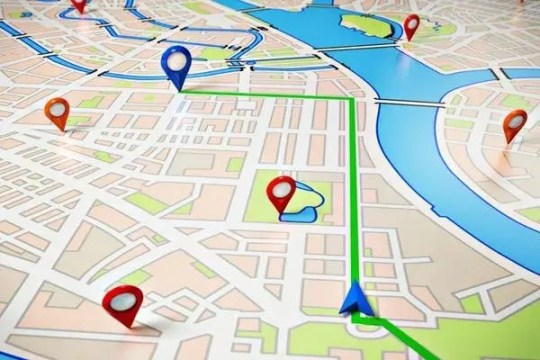
Remote Monitoring and Control: A lot of self-driving cars come with features that let their operators monitor and manage operations from a distance. This function improves safety and enables on-the-fly modifications in real time.
Interoperability: Autonomous vehicles can interact with other farm equipment and management systems in an agricultural setting to enable coordinated activities like planting, harvesting, and irrigation.
Safety Features: Safety is a top priority in the design of autonomous cars. To avoid collisions, they frequently have emergency stop systems and collision avoidance systems.
Advantages of Autonomous Agricultural and Construction Vehicles
The construction and agricultural industries stand to gain greatly from the many benefits that autonomous cars provide. The following are some of the main benefits:
Enhanced Productivity: Because autonomous cars can operate nonstop, they can accomplish tasks more quickly and with more efficiency. This is especially helpful in agriculture, where crop output depends on timely tasks like planting and harvesting.
Precision and Consistency: These vehicles follow predetermined routes and carry out jobs consistently, operating with a high degree of precision. Increased crop productivity, higher-quality building, and more efficient use of resources are all possible outcomes of this precision.
Cost Savings: Since autonomous cars require fewer human operators, labor costs may be lower in the long run. They use less fuel and resources because they run more effectively.
Operational Efficiency: Using information from sensors and AI algorithms, autonomous cars may instantly modify their course and optimize their routes. This flexibility leads to less waste and more effective use of resources.
Safety: Autonomous vehicles in the construction industry can carry out dangerous operations, such as excavation and demolition, without endangering human operators. They can lessen the physical strain on employees and assist in preventing field accidents in agriculture.
24/7 Operation: Since autonomous vehicles don’t need to sleep or take breaks, they can operate around the clock. This is especially useful at the most important times of the agricultural cycle.
Reduced Environmental Impact: By using resources like water and fertilizers more effectively, autonomous agricultural vehicles can lessen their negative effects on the environment and increase sustainability. Waste in construction can be decreased by optimizing resource use.
Data Gathering and Analysis: A multitude of data regarding the environment, agricultural conditions, and building sites can be gathered by these vehicles. To improve operations, long-term planning, and decision-making, this data can be evaluated.

Disadvantages of Autonomous Agricultural and Construction Vehicles
Although autonomous Agricultural and Construction Vehicles have many benefits, there are a number of drawbacks and difficulties that must be taken into account when putting this technology into practice. The following are some of the main drawbacks:
High Initial Costs: The acquisition and assimilation of self-driving cars and related technologies might be costly, potentially impeding their widespread use, particularly in small and medium-sized enterprises.
Maintenance and Repairs: Because autonomous cars are intricate machinery, they occasionally need professional personnel for repairs in addition to routine maintenance. When compared to conventional vehicles or equipment, maintenance expenses may be higher.
Liability and Legal Issues: Determining who is responsible for accidents or mistakes involving self-driving cars might be complicated, necessitating modifications to existing legal frameworks. It might be difficult to navigate the legal and regulatory environment.
Data security: A lot of data, including environmental and mapping data, is gathered and sent by autonomous cars. To stop misuse, hacking, or theft, it is essential to protect the security and privacy of this data.

Job Displacement: In industries where labor has historically been needed, the use of autonomous cars may result in employment displacement. It will be difficult to manage the social and economic effects of this relocation.
Technological Restrictions: Because autonomous cars rely on a variety of sensors and technology, they could have trouble operating in inclement weather, dimly lit areas, or challenging terrain. Restrictions imposed by technology may hinder their performance.
Human Oversight and Intervention: The ability of autonomous cars to function fully independently may be limited if they still need human supervision to manage difficult or unexpected scenarios.
Adaptation and Training: To properly operate, monitor, and maintain autonomous vehicles, personnel and operators may need to complete training. It may require some time and effort to become used to this new technology.
Conclusion:
In conclusion, autonomous agricultural and construction vehicles represent a transformative leap forward in the fields of farming and construction. These vehicles offer a wide array of benefits, including increased productivity, precision, cost savings, and enhanced safety. They have the potential to revolutionize the way we approach tasks in these industries, making them more efficient, sustainable, and safe.
However, their adoption is not without challenges. High initial costs, regulatory complexities, maintenance requirements, and potential job displacement are factors that must be carefully considered. These challenges emphasize the need for a strategic approach to implementation and a focus on long-term planning.
Despite these challenges, the advantages of autonomous vehicles cannot be overlooked. As technology continues to advance and regulations catch up, the integration of autonomous agricultural and construction vehicles is likely to become more widespread. The key will be to balance the advantages with the disadvantages and mitigate potential risks effectively.
In the coming years, as technology evolves and becomes more accessible, autonomous agricultural and construction vehicles have the potential to drive significant improvements in efficiency, safety, and sustainability, ultimately benefiting both businesses and the broader society. It is a promising path towards a future where we achieve more with less, while also ensuring that our agricultural and construction industries remain competitive and environmentally responsible.
#Autonomouscontrols#Agriculturalvehicles#ConstructionVehicles#selfdrivingcars#KeylessEntry#Cybersecurity#StartSystems#dorleco#controlsystem#ADAS#eMobilityControls#AVRescueProtocols#automotive#controlunit
0 notes
Text
Joint Transmission and Control in a Goal-oriented
Excerpt from PDF: Joint Transmission and Control in a Goal-oriented NOMA Network Kunpeng Liu1, Shaohua Wu1,2, Aimin Li1, and Qinyu Zhang1,2 1 Harbin Institute of Technology (Shenzhen), Shenzhen 518055, China 2 Peng Cheng Laboratory, Shenzhen 518055, China e-mail: 23S052017@stu.hit.edu.cn, liaimin@stu.hit.edu.cn, hitwush@hit.edu.cn, zqy@hit.edu.cn Abstract—Goal-oriented communication shifts the…
0 notes
Text
Autonomous Vehicle Software
October 30, 2023
by dorleco
with no comment
Autonomous Vehicle Technology
Edit
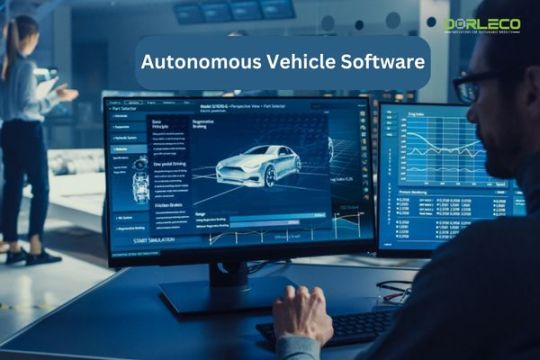
Introduction:
Self-driving cars, also known as autonomous vehicles, have quickly gained popularity as a ground-breaking technology that has the potential to completely change transportation. Modern software systems installed in these cars allow them to navigate and function on the road without the need for human assistance. In this overview of autonomous car software, we’ll look at the main elements, difficulties, and developments in the field of autonomous technology.
Essential Elements of Software for Autonomous Vehicles:
The software for autonomous vehicles is a complex system made up of various essential parts:
Perception: To sense its surroundings, the car’s perception system uses sensors including cameras, radar, LiDAR, and ultrasonic sensors. These sensors gather information about the environment around the car, such as other cars, people walking, traffic lights, and the state of the road.
Localization: The car needs localization in order to comprehend its exact location on the road. For precise localization, inertial measuring units (IMUs), GPS, and map data are utilized.
Mapping: Autonomous cars require high-definition maps. The vehicle is able to make educated decisions because of these maps, which offer comprehensive information about traffic signs, lane markings, and road layout.
Control: To make driving judgments in real-time, the control system analyzes data from perception, localization, and mapping. For safe navigation, it regulates the car’s braking, steering, and acceleration.
Planning and Decision-Making: Based on maps and the observed surroundings, the planning module creates a route for the vehicle, and the decision-making part weighs the pros and cons of each option before choosing the safest and most effective course of action.
Developments in Autonomous Vehicle Software:
The field of autonomous vehicle software has made significant strides recently, with important developments occurring in the following areas:
AI and machine learning: Algorithms for machine learning are enhancing the vision and judgment of self-driving cars, allowing them to take in information from the actual world and adjust to novel circumstances.
Simulation: By enabling developers to test and validate autonomous software in a variety of scenarios, extensive simulation environments can eliminate the requirement for in-person testing.
Connectivity: By sharing data with other cars, the traffic system, and pedestrians, autonomous vehicles can improve efficiency and safety through V2X (vehicle-to-everything) connectivity.
Over-the-Air (OTA) Updates: By addressing security flaws and enhancing performance, OTA software updates enable autonomous cars to receive regular software upgrades.

Pros of Autonomous Vehicle Software
Self-driving car software, or autonomous vehicle software, has several potential advantages and benefits. These advantages have the power to completely transform transportation while also boosting efficiency and safety. The following are a few of the main advantages of autonomous car software:
Increased Safety: Autonomous vehicles have the potential to drastically lower the frequency of collisions brought on by driver error, including speeding, distracted driving, and driving under the influence. Accidents may be reduced as a result of the software’s ability to obey traffic laws, keep safe distances, and make prompt, accurate decisions.
Reduced Traffic Congestion: By interacting with traffic infrastructure and one another, autonomous cars can improve traffic flow. This can lessen traffic congestion by easing blockages and increasing the general effectiveness of transportation networks.
Enhanced Accessibility: People with impairments, the elderly, and those unable to drive due to medical conditions may have more mobility thanks to autonomous vehicles. Their freedom and quality of life may both be greatly enhanced by this.
Environmental Benefits: Fuel economy and pollution can be optimized by programming autonomous cars. Air pollution and greenhouse gas emissions may decline in the future as a result of the switch to electric and driverless vehicles.
Reduced Parking Demand: Autonomous vehicles that can park and drop off people can lessen the need for parking spots in cities, utilizing valuable real estate more wisely.
Time savings: Traveling in an autonomous car allows passengers to make better use of their time. For commuters, this may result in higher output as well as better relaxation and lower stress levels.
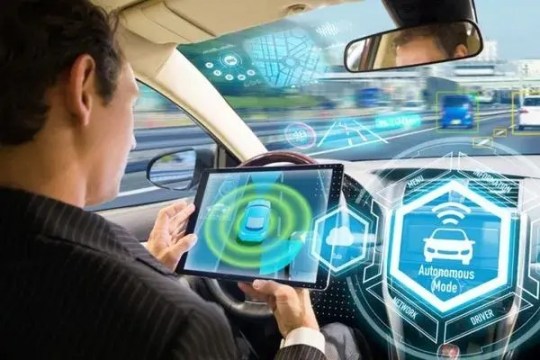
Economic Benefits: From software development to vehicle maintenance, the development and implementation of autonomous cars have the potential to provide jobs across a range of industries. It can also help sectors like delivery services and ride-sharing.
Enhanced Mobility Services: On-demand, shared mobility services can be made possible by autonomous technology, which will save customers money and increase the convenience of transportation. Additionally, it may lessen the necessity for individual car ownership.
Cons of Autonomous Vehicle Software
Although autonomous car software has a lot of potential advantages, there are a number of issues and problems that need to be resolved. The following are some drawbacks and issues with software for autonomous vehicles:
Safety and Reliability: Despite advancements, questions remain regarding the dependability and safety of autonomous cars. Ongoing difficulties include technology malfunctions, software bugs, and the capacity to manage complicated and unforeseen circumstances.
High Development Costs: The process of creating and testing software for autonomous vehicles is costly and resource-intensive. For many businesses, this expense can be a barrier to entry, which could lead to higher car prices.
Cyberattack vulnerability: Software and data transmission play a major role in autonomous cars. They become more susceptible to cyberattacks as a result, endangering their security and safety. One of the main concerns is being protected from cyber dangers.

Legal and Regulatory Difficulties: The laws and regulations pertaining to self-driving cars are constantly changing. It can be difficult to determine who is responsible for accidents or software malfunctions, which could impede the use of the technology.
Job displacement: As autonomous vehicles become more widely used, jobs in sectors including delivery, cab services, and haulage may be lost, thereby disrupting the economy and displacing drivers.
Ethical Dilemmas: In the event of an imminent collision, autonomous cars may have to decide between protecting pedestrians and the people in the vehicle, for example. Solving these moral conundrums is a difficult task.
Privacy Concerns: A lot of data, including location and passenger personal information, is collected and stored by autonomous cars. To stop abuse or breaches, data privacy and security must be guaranteed.
Limited Accessibility: Due to the high expense of autonomous technology, some socioeconomic groups may not be able to use it, which could lead to unequal access to transportation options.
Conclusion:
In conclusion, autonomous vehicle software represents a transformative technology that holds the promise of revolutionizing transportation and mobility. While the benefits are substantial, including improved safety, reduced traffic congestion, enhanced accessibility, and environmental advantages, it’s essential to recognize the challenges and concerns associated with this technology.
Safety and reliability, high development costs, cyber vulnerabilities, legal and regulatory hurdles, job displacement, ethical dilemmas, and privacy issues are among the significant cons that must be addressed as autonomous vehicles continue to evolve. Additionally, the impact on the job market and the potential for job displacement in transportation-related industries are subjects of concern that merit careful consideration.
The ongoing research, development, and collaboration among government agencies, industry stakeholders, and academia are crucial in overcoming these challenges and ensuring the responsible integration of autonomous vehicles into our transportation systems. Regulatory frameworks are evolving, and safety measures are continuously improving, with a strong emphasis on data privacy, security, and ethical considerations.
As the technology matures and these concerns are addressed, the potential for safer, more efficient, and more accessible transportation systems becomes increasingly attainable. Autonomous vehicle software represents a pivotal chapter in the evolution of mobility, offering not only convenience and efficiency but also the prospect of enhancing the overall quality of life for people around the world. Its success will ultimately depend on the ability to strike a balance between innovation and addressing the associated challenges, with a focus on the safety and well-being of all road users.
#Autonomouscontrols#EmergencyResponse#selfdrivingcars#KeylessEntry#Cybersecurity#StartSystems#dorleco#controlsystem#ADAS#eMobilityControls#AVRescueProtocols#automotive#controlunit
0 notes
Text
Cyber security for Autonomous Vehicles
October 27, 2023
by dorleco
with no comment
Autonomous Vehicle Technology
Edit
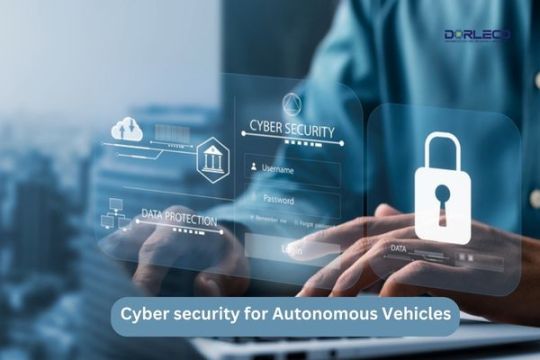
Introduction:
In the automobile business, autonomous vehicles, sometimes known as self-driving cars, are a game-changing technological advancement. These automobiles have the power to improve travel conditions generally, lessen traffic, and raise road safety. But as a result of its incorporation into our roads, a whole new set of security issues have surfaced. An overview of Cyber security for Autonomous Vehicles will be given in this introduction, along with a focus on the significance of protecting these cutting-edge modes of transportation.
The Importance of Cyber Security for Autonomous Vehicles
Data-Driven Operation: In order to make judgments in real time, autonomous cars mostly rely on communication networks and data. Any loss of availability or integrity of data might have dire repercussions.
Safety Issues: Passengers’ and other drivers’ safety may be in danger if autonomous cars are compromised. Accidents can occur when sensors are manipulated or when the operations of the vehicle are controlled remotely.
Privacy Concerns: A lot of information about the whereabouts and actions of passengers is gathered by autonomous cars. To preserve privacy, this sensitive information must be protected.
Economic Impact: The market for autonomous cars is expected to reach $1 trillion. Cybersecurity breaches may disrupt this developing market, resulting in monetary losses and eroding public confidence.
Key Cyber Security Challenges:
Vehicular Networks: Through intricate networks, autonomous cars can interact with infrastructure and with one another. These networks must be secured in order to stop illegal access and data breaches.
Sensor Systems: LiDAR and cameras are two examples of sensors that are essential for perception and navigation. It is possible to trick the car using these sensors, which poses a risk to safety.
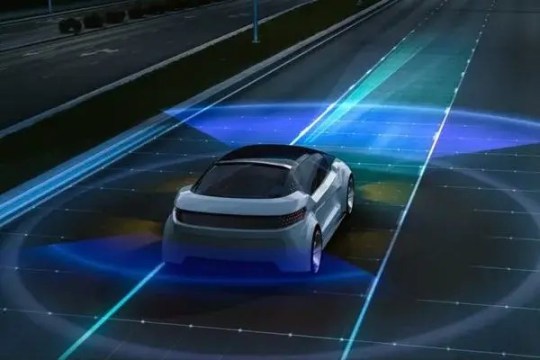
Software Vulnerabilities: The complex software systems that autonomous cars rely on could have flaws. Software security and patching are essential to preventing exploits.
Over-the-Air (OTA) Updates: OTA updates improve the security and functionality of vehicles. It is imperative to guarantee the validity and integrity of these updates.
Human-Machine Interface (HMI): Infotainment systems and other HMI components need to be secured against hacking attempts that can compromise the operation of cars.
Mitigating Cyber Security Risks:
Encryption: To avoid data theft and eavesdropping, data should be encrypted both while it is in transit and at rest.
Intrusion Detection Systems: Use cutting-edge intrusion detection technologies to keep an eye on network activity and spot irregularities.
Firmware Validation and Secure Boot: Make use of secure boot procedures to guarantee that the car’s systems are running only approved firmware.
Multi-Factor Authentication: Use strong authentication methods, such as multi-factor authentication, to gain access to car systems and data.
Collaboration and Regulation: Encourage cooperation between automakers, authorities, and cyber security professionals to create and implement industry standards and laws.
Advantages of Cybersecurity for Autonomous Vehicles
Numerous benefits are provided by cybersecurity for autonomous vehicles, which are essential for guaranteeing the dependable and safe functioning of these vehicles. These benefits are critical to the success and widespread acceptance of autonomous vehicle technology and the safety of both passengers and the broader public. The following are the main benefits of cybersecurity for self-driving cars:
1. Safety and Reliability:
Cybersecurity measures protect autonomous cars from malevolent cyberattacks, preventing the compromise of their vital operational systems. This improves safety by reducing the possibility of unwanted access, data theft, or manipulation of vehicle functionality.
Avoiding Accidents: Cybersecurity precautions might lessen the likelihood of mishaps brought on by hacking into car controls or sensors. Ensuring the accuracy of decisions and preventing collisions requires safeguarding the integrity of sensor data and communication systems.
2. Data Privacy:
Safeguarding Personal Information: Autonomous cars collect a tonne of information about the whereabouts and activities of their occupants. Passenger privacy is preserved via effective cybersecurity, which guarantees that this sensitive information is kept private.
Adherence to Data Regulations: With data privacy laws such as the CCPA and GDPR in force, it is imperative to guarantee the security of personal information in autonomous cars in order to prevent legal ramifications.
3. Maintaining Public Trust:
Building Confidence: Maintaining Public Trust in a strong cyber security framework fosters public, manufacturer, and passenger trust. If passengers feel that their privacy and safety are guaranteed, they are more likely to accept autonomous vehicles.
Maintaining Reputation: Manufacturers of autonomous vehicles and the technology in general risk having their good name damaged by a single cyber security incident. Robust cyber security safeguards the industry’s reputation.
4. Preventing Financial Loss:
Safeguarding Investments: The automobile industry, manufacturers, and stakeholders have to make substantial investments in autonomous vehicles. By averting security breaches and the resulting financial losses, cyber security contributes to the protection of these investments.
Liabilities Reduction: Cyber security for Autonomous Vehicles measures might lessen the possibility of legal ramifications from autonomous vehicle-related accidents or privacy violations.
5. Meeting Industry Standards:
Complying with Regulations: The development and implementation of autonomous cars require adherence to cybersecurity standards and regulations. Government agencies and business associations frequently demand adherence to these criteria.
Reducing Regulatory Barriers: Good Cyber security for Autonomous Vehicles procedures can make it easier for producers of autonomous vehicles to comply with regulatory regulations, hastening the commercialization of the technology.
6. Secure Updates:
Over-the-air Updates: Over-the-air (OTA) updates are frequently used in autonomous vehicles. Cybersecurity makes sure these upgrades are safe and uncheckable. This stops software vulnerabilities and illegal changes.

7. Continuous Improvement:
Adaptability: Because cybersecurity is dynamic, it must constantly evolve to meet new threats. Cybersecurity procedures for autonomous vehicles allow for continuous improvement and tinkering with security protocols.
Disadvantages of Cyber Security for Autonomous Vehicles
Although Cyber security for Autonomous Vehicles is crucial for self-driving cars, putting these precautions in place has significant drawbacks and difficulties. To successfully address and minimize these difficulties, awareness of them is essential. The following are a few drawbacks of cybersecurity for self-driving cars:
Cost and Complexity: Putting strong cybersecurity safeguards in place can be expensive and time-consuming. The cost of developing autonomous vehicles may go up as a result of the substantial financial and human resources needed to create, maintain, and update security systems and protocols.
Performance Impact: There may be a performance cost associated with certain cybersecurity solutions, such as intrusion detection systems and encryption. This may have an impact on autonomous cars’ ability to make decisions in real time, which could cause delays in reacting to urgent circumstances.
Negatives/False Positives: Intrusion detection systems might mistakenly identify genuine threats or produce false alerts. This can be a big problem because ignored threats might have serious repercussions, and false alarms can cause needless interventions or service interruptions.
Regulatory Compliance: Although following regulations is necessary to guarantee a minimal level of security, it might be difficult to do so. It can be difficult for manufacturers to comply with various regional standards and laws when they change.
Resource Constraints: In the autonomous vehicle sector, smaller or newly established businesses may find it difficult to set aside enough funds for effective cybersecurity procedures. This may cause their cars to have security flaws.
User Experience: The user experience may suffer from overly stringent cybersecurity measures. Passengers may become irritated and discouraged from using autonomous vehicles as a result of overly stringent security procedures, such as frequent identification reminders.
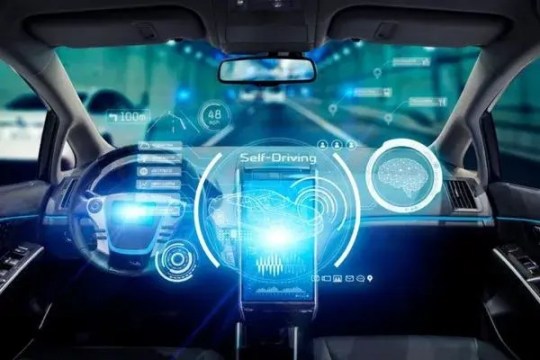
Interoperability Problems: It can be difficult to make sure that different autonomous car systems and parts are interoperable with one another and follow cybersecurity guidelines. Vulnerabilities resulting from incompatibilities could be exploited by attackers.
Conclusion:
In conclusion, Cyber security for Autonomous Vehicles is a critical and evolving field that plays a pivotal role in the successful integration of self-driving cars into our transportation systems. The advantages of robust cybersecurity measures, including safety, data privacy, public trust, financial protection, regulatory compliance, and the facilitation of secure over-the-air updates, are significant and far-reaching. These advantages not only safeguard passengers and the public but also contribute to the continued growth and success of the autonomous vehicle industry.
However, it is equally important to acknowledge the challenges and disadvantages associated with implementing Cyber security for Autonomous Vehicles. These challenges, such as increased complexity and cost, potential performance impacts, and the need to strike a delicate balance between innovation and security, underscore the need for a comprehensive and adaptable approach to cybersecurity.
Addressing these challenges requires collaboration among autonomous vehicle manufacturers, cybersecurity experts, regulators, and stakeholders. It necessitates ongoing research and development to stay ahead of evolving threats and vulnerabilities. Moreover, it emphasizes the importance of designing security measures that do not hinder the user experience but rather enhance it.
As autonomous vehicles become an integral part of our future transportation landscape, ensuring that they are secure from cyber threats is not just a technical concern but a social and ethical responsibility. By proactively addressing these challenges and leveraging the advantages of Cyber security for Autonomous Vehicles, we can pave the way for safer, more efficient, and more reliable autonomous vehicles that benefit society as a whole. Cybersecurity is the linchpin in this endeavor, providing the assurance that the promise of self-driving cars can be realized while minimizing the risks associated with them.
#Autonomouscontrols#EmergencyResponse#selfdrivingcars#KeylessEntry#Cybersecurity#StartSystems#dorleco#controlsystem#ADAS#eMobilityControls#AVRescueProtocols#automotive#controlunit
0 notes
Text
Autonomous Vehicle Simulation and Testing
October 26, 2023
by dorleco
with no comment
Autonomous Vehicle Technology
Edit

Introduction
Autonomous vehicles, sometimes known as self-driving automobiles, are a revolutionary development in the auto sector. These cars could improve accessibility, efficiency, and safety in transportation. To assure their safety and dependability, they must first go through thorough modeling and testing before being used on a big scale. This introduction gives a general overview of the Autonomous Vehicle Simulation and Testing while emphasizing their significance, essential elements, and difficulties.
1. Importance of Autonomous Vehicle Simulation and Testing:
Safety Assurance: It is crucial to guarantee the safety of autonomous cars. Testing and simulation offer a controlled environment to find and fix potential system flaws, preventing accidents and preserving public confidence.
Regulatory Compliance: Autonomous cars are subject to strict regulatory requirements. Manufacturers can demonstrate compliance with these criteria with the aid of Autonomous Vehicle Simulation and Testing.
Cost-Efficiency: Testing under actual conditions can be expensive and time-consuming. Simulations enable rapid data collecting and cost-effective testing.
Performance Optimization: Autonomous vehicle systems can be improved for best performance, responsiveness, and dependability through Autonomous Vehicle Simulation and Testing.
2. Components of Autonomous Vehicle Simulation and Testing:
Sensor Simulation: Autonomous vehicles rely on a variety of sensors, including LiDAR, radar, cameras, and GPS. The responses of the vehicle to various events are evaluated by simulations that imitate sensor inputs.
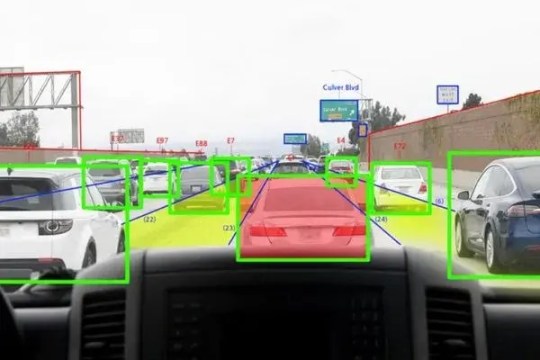
Environment modeling: To simulate real-world situations such as traffic, pedestrians, and weather, virtual environments are constructed. This makes testing possible in a variety of difficult circumstances.
Behavioral Modeling: Simulation models the behavior of the vehicle, including course planning and collision avoidance, to assess its capacity for safe navigation.
Data Logging and Analysis: During simulations and tests, a large amount of data is collected, which is then examined to find potential problems, confirm system performance, and enhance algorithms.
3. Testing Types:
Hardware-in-the-Loop (HIL): The autonomous vehicle’s hardware components, such as sensors and controllers, are evaluated in a simulated environment during Hardware-in-the-Loop (HIL) testing. As a result, early validation is possible without deploying the entire vehicle.
Software-in-the-loop (SIL): Software-in-the-loop (SIL) testing entails executing the software for an autonomous vehicle in a simulated setting. It evaluates the algorithms and decision-making processes used by the vehicle.
Vehicle-in-the-loop (VIL): Vehicle-in-the-loop (VIL) is a method for simulating traffic and environments while using actual automobiles. This strategy creates a link between simulation and practical testing.
Real-World Testing: To verify system performance once the Autonomous Vehicle Simulation and Testing in safe environments are successful, real-world testing is carried out on closed rails and open highways.
4. Challenges:
Realism: High levels of realism in simulations can be difficult to achieve. Simulated settings must faithfully reflect actual environmental conditions.
Scenario Diversity: It is crucial to test autonomous vehicles in a variety of situations, including uncommon and edge instances that can be challenging to thoroughly replicate.
Regulatory Framework: The process of creating a precise regulatory framework for the certification and testing of autonomous vehicles is one that is both difficult and dynamic.
Cybersecurity: Because autonomous vehicles are susceptible to cyberattacks, security testing is an important step in the development process.
Pros of Autonomous Vehicle Simulation and Testing
The development and use of self-driving automobiles are made possible by the many benefits that autonomous vehicle simulation and testing provide. A few of the main benefits are as follows:
1. Safety Enhancement:
Autonomous vehicle modeling and testing offer a safe and controlled environment to spot and address potential security flaws. This reduces the risks linked to driverless vehicles.
2. Reduced Real-world Testing Costs:
Comparatively speaking to testing on actual roads, simulation testing is more economical. Development becomes more effective and inexpensive when costs for gasoline, maintenance, and the requirement for real test tracks are eliminated.
3. Scalability:
Engineers may assess an autonomous vehicle’s performance under a variety of settings and scenarios using simulations, which allows for quick scaling and eliminates the need for significant real-world testing.
4. Scenario Reproducibility:
Simulated environments make it simpler to compare results, validate improvements, and gauge how the vehicle will behave in various scenarios by precisely replicating scenarios and conditions.
5. Quick Iteration:
Engineering can quickly discover problems and take action to fix them thanks to simulation, which promotes more rapid development of hardware and software.
6. Data Collection and Analysis:
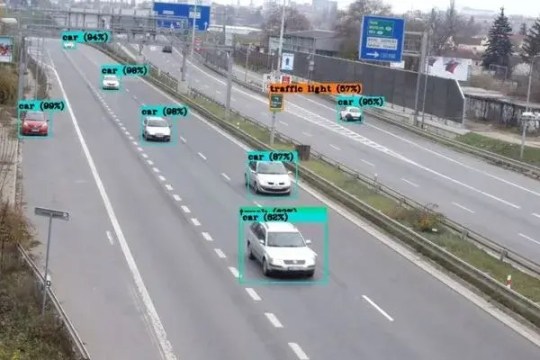
7. Privacy and Security:
Simulated testing lowers the danger of intellectual property theft and privacy violations by avoiding exposing sensitive information or proprietary technologies on public roads.
8. Versatility:
In order to conduct a thorough examination, simulations can reproduce a variety of driving situations, including extreme scenarios that are risky or difficult to replicate in real-world testing.
Cons of Autonomous Vehicle Simulation and Testing
Although testing and simulating autonomous vehicles has many benefits, there are some drawbacks and difficulties with these methods as well. The following are some drawbacks of testing and simulating autonomous vehicles:
1. Limited Realism:
Simulated settings might not always accurately reflect the complexity of actual environmental factors, which could pose problems for evaluating the performance of autonomous vehicles. Unrepresentative factors may include human drivers’ unpredictable behavior, unmodeled road dangers, and changes in infrastructure.
2. Overfitting:
Autonomous systems may underperform when exposed to unanticipated real-world settings if they have been fine-tuned primarily using simulation data.
3. Sensor Realism:
It’s possible that simulated sensor data won’t accurately reflect the nuances of real sensor inputs, which could cause differences between the system’s performance in simulation and in practice.
4. Incomplete Scenario Coverage:
Comprehensive scenario database creation can be a time-consuming and difficult undertaking for simulations. There is a chance of missing unusual but important circumstances that are essential for assessing the safety of an autonomous vehicle.
5. Simulation Uncertainty:
The reliability of test findings might be impacted by uncertainty and modeling mistakes in the simulation environment. If simulations are not thoroughly tested, this could create a false sense of security.
6. Hardware-in-the-Loop (HIL) Complexity:

7. Data and Processing Demands:
Massive volumes of data are produced during simulation, and this data needs to be stored, processed, and analyzed, which can be costly and resource-intensive.
8. Dynamic Traffic Interactions:
Due to their unpredictable nature and the requirement for high-fidelity modeling, real-time interactions with other road users, like as pedestrians, cyclists, and human drivers, can be difficult to simulate.
Conclusion:
In conclusion, autonomous vehicle simulation and testing are indispensable components of the development and deployment of self-driving cars. These processes play a pivotal role in enhancing the safety, reliability, and functionality of autonomous systems. While there are both pros and cons associated with these methods, their collective impact is overwhelmingly positive, shaping the future of transportation in significant ways.
However, it is important to acknowledge the challenges and limitations that come with Autonomous Vehicle Simulation and Testing, such as the need for realistic modeling, the risk of overfitting, and the complexity of edge cases. Real-world testing remains essential to validate the technology under unpredictable and complex conditions.
Balancing simulation with real-world testing is critical to achieving the necessary safety and reliability standards for autonomous vehicles. The ongoing development and integration of these methods will continue to play a central role in the future of transportation, paving the way for safer, more efficient, and more accessible Autonomous Vehicle Simulation and Testing.
#Autonomouscontrols#EmergencyResponse#selfdrivingcars#KeylessEntry#HybridVehicle#StartSystems#dorleco#controlsystem#ADAS#eMobilityControls#AVRescueProtocols#automotive#controlunit
0 notes
Text
Autonomous Vehicle Control
October 25, 2023
by dorleco
with no comment
Autonomous Vehicle Technology
Edit
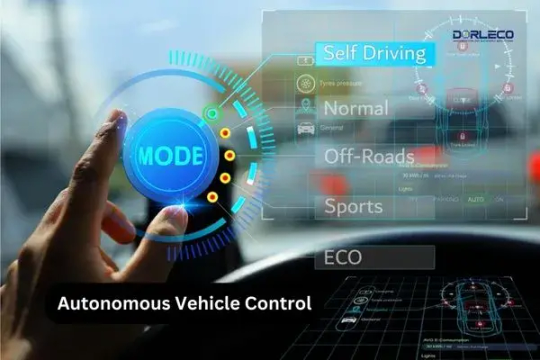
Introduction
Autonomous vehicles, often known as self-driving cars, are an innovative technology that has the potential to change the way we travel and how we conduct our daily lives. These vehicles use a combination of sensors, software, and control systems to make real-time driving decisions in a manner comparable to that of a human driver. They are built to navigate and run autonomously. We’ll look at the basic ideas and elements of autonomous vehicle control in this introduction.
1. Sensors:
Different types of sensors are included in autonomous cars, which provide them access to crucial data about their environment. These sensors consist of:
Lidar: Laser-based sensors that produce precise 3D representations of the surroundings of a moving object.
Radar: Radio waves are used by radar to measure an object’s distance and relative speed.
Cameras: Use cameras to take pictures and movies that can be used to identify other vehicles, traffic signs, and lane markings.
Ultrasonic sensors: Locate things in the immediate area to help with parking and slow-moving maneuvers.
GPS: Offers location data and aids with navigation.
2. Control systems:
To make judgments in real time, autonomous cars rely on highly developed control systems. These systems analyze sensor data and carry out directives for vehicle control, such as steering, braking, acceleration, and more. Even in complicated and dynamic surroundings, control algorithms guarantee safe and effective driving.
3. Perception and Mapping:
Algorithms for perception aid the vehicle’s understanding of its surroundings. They identify things, anticipate their movements, and weigh the hazards. Simultaneously, mapping software builds accurate, current maps of the road system to help the vehicle navigate.
4. Localization:
Autonomous vehicles must constantly be aware of their exact location. For this, GPS is insufficient on its own. By fusing sensor data with map information, sophisticated systems like Simultaneous Localization and Mapping (SLAM) assist vehicles in maintaining precise placement.
5. Making Decisions:
The autonomous vehicle’s decision-making algorithms constitute its brain. To decide whether to change lanes, when to stop at a traffic signal, and how to avoid obstacles, they examine sensor data, traffic conditions, and route information. While taking into account variables like traffic regulations and passenger preferences, these algorithms must prioritize safety.
6. Communication:

7. Safety and Redundancy:
The safety of autonomous cars is of the utmost importance. To lessen the effects of component failures, these vehicles are built with numerous layers of redundancy, including backup sensors and control systems. They also go through a lot of testing and validation to ensure they meet high safety standards.
8. Challenges and Ethical Considerations:
The creation and use of autonomous cars present a number of difficulties, including moral and legal issues. For instance, it is still difficult to determine who is responsible for an accident involving an autonomous car. It is also up for dispute how these cars should prioritize safety in morally dubious circumstances.
Pros of Autonomous Vehicle Control
Numerous potential advantages of autonomous vehicle control could revolutionize the way we view transportation. A few of the main benefits of autonomous vehicles are as follows:
Safety Enhancement: Traffic accidents could be drastically decreased by autonomous vehicles. Human mistake, such as driving while distracted or having poor judgment, is to blame for the majority of accidents. Roads may become safer as a result of autonomous cars’ ability to abide by traffic regulations and make decisions based on sensor data.
Lessening of Traffic Congestion: Because autonomous vehicles can communicate with one another and the traffic infrastructure, there will be less traffic congestion. They can coordinate lane changes, intersections, and mergers to ease traffic congestion and minimize stop-and-go patterns.
Increased gasoline Efficiency: Because autonomous vehicles can optimize their driving habits and speeds, they use less gasoline overall. This can lessen greenhouse gas emissions and the overall negative effects of transportation on the environment.
Enhanced Mobility for the Elderly and Disabled: People who are unable to drive due to disability or age-related restrictions may experience a new degree of mobility thanks to autonomous vehicles. Their independence and quality of life may both benefit from this.
Increased Productivity and Leisure Time: Passengers in autonomous vehicles can make better use of their trip time through increased productivity and leisure time. While the car is driving, the occupants can work, read, or enjoy themselves. This may boost overall productivity and lessen commute-related stress.
Reduced Parking Demand: The demand for premier parking spaces in city centers can be decreased by autonomous vehicles’ ability to pick up passengers and Then Park in more distant or practical locations. This may result in reduced need for parking infrastructure and more effective use of the area.
Savings: Autonomous cars have the ability to bring down the price of transportation as a whole. Autonomous ride-sharing services have made it possible for people to choose on-demand transportation over owning a personal vehicle, saving money on costs like maintenance, insurance, and fuel.
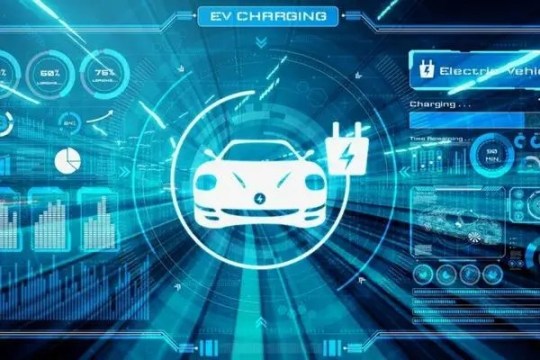
Cons of Autonomous Vehicle Control
Although autonomous vehicle technology has a lot of potential, there are also a number of possible risks and difficulties. The following are some drawbacks and issues with autonomous vehicle control:
Limitations of the technology: The technology of autonomous vehicles is still developing, and it is not infallible. They may find it difficult to function in bad weather, handle unforeseen circumstances, or correctly detect items like walkers and bikers.
High Development Costs: Developing and testing autonomous vehicle technology requires significant financial investment. These expenses might make the technology prohibitively expensive for smaller businesses, which would raise the cost of vehicles.
Cyber security Risks: Because autonomous vehicles rely so heavily on connectivity and software, they are vulnerable to hacking and other online attacks. Vehicle security and privacy could be jeopardized by a successful attack.

Concerns regarding data privacy: Autonomous vehicles gather a ton of information about their environment, passengers, and travel habits. There are worries about how this data is handled, used, and protected, which may violate people’s right to privacy.
Liability and Legal Issues: It can be difficult to determine who is at fault in an accident involving an autonomous vehicle. Is the owner at fault, the software creator, or the manufacturer of the vehicle? These legal problems can be difficult to resolve.
Job displacement: As autonomous vehicles proliferate, there may be a loss of jobs in transportation-related sectors like trucking and taxi services. Economic and social ramifications may result from this.
Ethical Conundrums: When faced with a decision between two options, autonomous cars will confront ethical conundrums that could result in moral conundrums. For instance, the programming of the vehicle may be required to make challenging protection judgments in cases of inevitable collisions.
Regulatory Difficulties: Creating thorough legislation for self-driving cars is a difficult and time-consuming procedure. There may be inconsistencies and potential adoption barriers due to different areas and nations’ various laws and regulations.
Conclusion:
In conclusion, autonomous vehicle control represents a promising technological advancement with the potential to reshape the way we approach transportation. The integration of sensors, sophisticated software, and control systems allows these vehicles to operate with a high degree of autonomy, offering a range of potential benefits. These benefits include increased safety, reduced traffic congestion, improved fuel efficiency, enhanced mobility for disabled and elderly individuals, increased productivity during travel, and numerous environmental and cost-saving advantages.
However, it’s crucial to acknowledge the challenges and concerns associated with autonomous vehicles. These challenges encompass technological limitations, high development costs, cybersecurity risks, data privacy concerns, legal and liability issues, potential job displacement, ethical dilemmas, and regulatory complexities. Additionally, the adaptation of infrastructure, consumer trust, and accessibility disparities must be considered.
As the development and deployment of autonomous vehicles continue, it’s essential to strike a balance between harnessing their potential benefits and addressing the associated challenges. Thoughtful regulation, ongoing research and development, and a strong commitment to safety and ethical considerations will play a significant role in realizing the full potential of autonomous vehicle control. The path toward fully autonomous transportation may be complex, but it holds the promise of safer, more efficient, and more accessible mobility for the future.
#Autonomouscontrols#EmergencyResponse#selfdrivingcars#KeylessEntry#HybridVehicle#StartSystems#dorleco#controlsystem#ADAS#eMobilityControls#AVRescueProtocols#automotive#controlunit
0 notes